| Citation: |
Ao Song, Qiri Huang, Chunyang Zhang, Haoran Tang, Kai Zhang, Chunchen Liu, Fei Huang, Yong Cao. Highly efficient organic solar cells with improved stability enabled by ternary copolymers with antioxidant side chains[J]. Journal of Semiconductors, 2023, 44(8): 082202. doi: 10.1088/1674-4926/44/8/082202
****
A Song, Q R Huang, C Y Zhang, H R Tang, K Zhang, C C Liu, F Huang, Y Cao. Highly efficient organic solar cells with improved stability enabled by ternary copolymers with antioxidant side chains[J]. J. Semicond, 2023, 44(8): 082202. doi: 10.1088/1674-4926/44/8/082202
|
Highly efficient organic solar cells with improved stability enabled by ternary copolymers with antioxidant side chains
DOI: 10.1088/1674-4926/44/8/082202
More Information
-
Abstract
The stability of organic solar cells (OSCs) remains a major concern for their ultimate industrialization due to the photo, oxygen, and water susceptibility of organic photoactive materials. Usually, antioxidant additives are blended as radical scavengers into the active layer. However, it will induce the intrinsic morphology instability and adversely affect the efficiency and long-term stability. Herein, the antioxidant dibutylhydroxytoluene (BHT) group has been covalently linked onto the side chain of benzothiadiazole (BT) unit, and a series of ternary copolymers D18-Cl-BTBHTx (x = 0, 0.05, 0.1, 0.2) with varied ratio of BHT-containing side chains have been synthesized. It was found that the introduction of BHT side chains would have a negligible effect on the photophysical properties and electronic levels, and the D18-Cl-BTBHT0.05: Y6-based OSC achieved the highest power conversion efficiency (PCE) of 17.6%, which is higher than those based active layer blended with BHT additives. More importantly, the unencapsulated device based on D18-Cl-BTBHTx (x = 0.05, 0.1, 0.2) retained approximately 50% of the initial PCE over 30 hours operation under ambient conditions, significantly outperforming the control device based on D18-Cl (90% degradation in PCE after 30 h). This work provides a new structural design strategy of copolymers for OSCs with simultaneously improved efficiency and stability. -
References
[1] Chen S S, Jung S, Cho H J, et al. Highly flexible and efficient all-polymer solar cells with high-viscosity processing polymer additive toward potential of stretchable devices. Angewandte Chemie Int Ed, 2018, 57(40), 13277 doi: 10.1002/anie.201807513[2] Hou J H, Inganäs O, Friend R H, et al. Organic solar cells based on non-fullerene acceptors. Nat Mater, 2018, 17(2), 119 doi: 10.1038/nmat5063[3] Kaltenbrunner M, White M S, Głowacki E D, et al. Ultrathin and lightweight organic solar cells with high flexibility. Nat Commun, 2012, 3, 770 doi: 10.1038/ncomms1772[4] Koo D, Jung S, Seo J, et al. Flexible organic solar cells over 15% efficiency with polyimide-integrated graphene electrodes. Joule, 2020, 4(5), 1021 doi: 10.1016/j.joule.2020.02.012[5] Liu W, Xu X, Yuan J, et al. Low-bandgap non-fullerene acceptors enabling high-performance organic solar cells. ACS Energy Lett, 2021, 6(2), 598 doi: 10.1021/acsenergylett.0c02384[6] Liu Y H, Liu B W, Ma C Q, et al. Recent progress in organic solar cells (Part II device engineering). Sci China Chem, 2022, 65(8), 1457 doi: 10.1007/s11426-022-1256-8[7] Liu Y Q, Qi N, Song T, et al. Highly flexible and lightweight organic solar cells on biocompatible silk fibroin. ACS Appl Mater Interfaces, 2014, 6(23), 20670 doi: 10.1021/am504163r[8] Miao J H, Wang Y H, Liu J, et al. Organoboron molecules and polymers for organic solar cell applications. Chem Soc Rev, 2022, 51(1), 153 doi: 10.1039/D1CS00974E[9] Murugan P, Hu T, Hu X T, et al. Fused ring A–DA′D–A (Y-series) non-fullerene acceptors: Recent developments and design strategies for organic photovoltaics. J Mater Chem A, 2022, 10(35), 17968 doi: 10.1039/D2TA04501J[10] Scharber M C, Mühlbacher D, Koppe M, et al. Design rules for donors in bulk-heterojunction solar cells—Towards 10% energy-conversion efficiency. Adv Mater, 2006, 18(6), 789 doi: 10.1002/adma.200501717[11] Tong Y, Xiao Z, Du X Y, et al. Progress of the key materials for organic solar cells. Sci China Chem, 2020, 63(6), 758 doi: 10.1007/s11426-020-9726-0[12] Wadsworth A, Moser M, Marks A, et al. Critical review of the molecular design progress in non-fullerene electron acceptors towards commercially viable organic solar cells. Chem Soc Rev, 2019, 48(6), 1596 doi: 10.1039/C7CS00892A[13] Xiao Y F, Zuo C T, Zhong J X, et al. Large-area blade-coated solar cells: Advances and perspectives. Adv Energy Mater, 2021, 11(21), 2100378 doi: 10.1002/aenm.202100378[14] Xu B W, Hou J H. Solution-processable conjugated polymers as anode interfacial layer materials for organic solar cells. Adv Energy Mater, 2018, 8(20), 1800022 doi: 10.1002/aenm.201800022[15] Xu H T, Yuan F, Zhou D, et al. Hole transport layers for organic solar cells: Recent progress and prospects. J Mater Chem A, 2020, 8(23), 11478 doi: 10.1039/D0TA03511D[16] Xue R M, Zhang J W, Li Y W, et al. Organic solar cell materials toward commercialization. Small, 2018, 14(41), 1801793 doi: 10.1002/smll.201801793[17] Zhang G Y, Zhao J B, Chow P C Y, et al. Nonfullerene acceptor molecules for bulk heterojunction organic solar cells. Chem Rev, 2018, 118(7), 3447 doi: 10.1021/acs.chemrev.7b00535[18] Zhang J Q, Tan H S, Guo X G, et al. Material insights and challenges for non-fullerene organic solar cells based on small molecular acceptors. Nat Energy, 2018, 3(9), 720 doi: 10.1038/s41560-018-0181-5[19] Zhu L, Zhang M, Zhong W K, et al. Progress and prospects of the morphology of non-fullerene acceptor based high-efficiency organic solar cells. Energy Environ Sci, 2021, 14(8), 4341 doi: 10.1039/D1EE01220G[20] Chen S H, Feng L W, Jia T, et al. High-performance polymer solar cells with efficiency over 18% enabled by asymmetric side chain engineering of non-fullerene acceptors. Sci China Chem, 2021, 64(7), 1192 doi: 10.1007/s11426-021-1013-0[21] Cui Y, Yao H, Zhang J, et al. Single-Junction organic photovoltaic cells with approaching 18% efficiency. Adv Mater, 2020, 32(19), e1908205 doi: 10.1002/adma.201908205[22] Yuan J, Zhang Y Q, Zhou L Y, et al. Single-junction organic solar cell with over 15% efficiency using fused-ring acceptor with electron-deficient core. Joule, 2019, 3(4), 1140 doi: 10.1016/j.joule.2019.01.004[23] Wei Y N, Chen Z H, Lu G Y, et al. Binary organic solar cells breaking 19% via manipulating the vertical component distribution. Adv Mater, 2022, 34(33), 2204718 doi: 10.1002/adma.202204718[24] Gao W, Qi F, Peng Z X, et al. Achieving 19% power conversion efficiency in planar-mixed heterojunction organic solar cells using a pseudosymmetric electron acceptor. Adv Mater, 2022, 34(32), 2202089 doi: 10.1002/adma.202202089[25] Zhu L, Zhang M, Xu J Q, et al. Single-junction organic solar cells with over 19% efficiency enabled by a refined double-fibril network morphology. Nat Mater, 2022, 21(6), 656 doi: 10.1038/s41563-022-01244-y[26] Burlingame Q, Huang X H, Liu X, et al. Intrinsically stable organic solar cells under high-intensity illumination. Nature, 2019, 573, 394 doi: 10.1038/s41586-019-1544-1[27] Du X Y, Heumueller T, Gruber W, et al. Efficient polymer solar cells based on non-fullerene acceptors with potential device lifetime approaching 10 years. Joule, 2019, 3(1), 215 doi: 10.1016/j.joule.2018.09.001[28] Duan L, Uddin A. Progress in Stability of Organic Solar Cells. Adv Sci, 2020, 7(11), 1903259 doi: 10.1002/advs.201903259[29] Li Y X, Huang X H, Ding K, et al. Non-fullerene acceptor organic photovoltaics with intrinsic operational lifetimes over 30 years. Nat Commun, 2021, 12(1), 5419 doi: 10.1038/s41467-021-25718-w[30] Liang Y C, Zhang D F, Wu Z R, et al. Organic solar cells using oligomer acceptors for improved stability and efficiency. Nat Energy, 2022, 7(12), 1180 doi: 10.1038/s41560-022-01155-x[31] Xu X, Xiao J, Zhang G, et al. Interface-enhanced organic solar cells with extrapolated T80 lifetimes of over 20 years. Science Bulletin, 2020, 65(3), 208 doi: 10.1016/j.scib.2019.10.019[32] Rafique S, Abdullah S M, Sulaiman K, et al. Fundamentals of bulk heterojunction organic solar cells: An overview of stability/degradation issues and strategies for improvement. Renew Sustain Energy Rev, 2018, 84, 43 doi: 10.1016/j.rser.2017.12.008[33] Rivaton A, Tournebize A, Gaume J, et al. Photostability of organic materials used in polymer solar cells. Polym Int, 2014, 63(8), 1335 doi: 10.1002/pi.4656[34] Jørgensen M, Norrman K, Gevorgyan S A, et al. Stability of polymer solar cells. Adv Mater, 2012, 24(5), 580 doi: 10.1002/adma.201104187[35] Krebs F C. Encapsulation of polymer photovoltaic prototypes. Sol Energy Mater Sol Cells, 2006, 90(20), 3633 doi: 10.1016/j.solmat.2006.06.055[36] Uddin A, Upama M, Yi H M, et al. Encapsulation of organic and perovskite solar cells: A review. Coatings, 2019, 9(2), 65 doi: 10.3390/coatings9020065[37] Oh J, Lee S M, Jung S, et al. Antioxidant additive with a high dielectric constant for high photo-oxidative stabilization of organic solar cells without almost sacrificing initial high efficiencies. Sol RRL, 2021, 5(7), 2000812 doi: 10.1002/solr.202000812[38] Soon Y W, Cho H, Low J, et al. Correlating triplet yield, singlet oxygen generation and photochemical stability in polymer/fullerene blend films. Chem Commun, 2013, 49(13), 1291 doi: 10.1039/c2cc38243a[39] Guo J, Wu Y, Sun R, et al. Suppressing photo-oxidation of non-fullerene acceptors and their blends in organic solar cells by exploring material design and employing friendly stabilizers. J Mater Chem A, 2019, 7(43), 25088 doi: 10.1039/C9TA09961A[40] Salvador M, Gasparini N, Perea J D, et al. Suppressing photooxidation of conjugated polymers and their blends with fullerenes through nickel chelates. Energy Environ Sci, 2017, 10(9), 2005 doi: 10.1039/C7EE01403A[41] Turkovic V, Engmann S, Tsierkezos N, et al. Long-term stabilization of organic solar cells using hindered phenols as additives. ACS Appl Mater Interfaces, 2014, 6(21), 18525 doi: 10.1021/am5024989[42] Zeng A P, Ma X L, Pan M G, et al. A chlorinated donor polymer achieving high-performance organic solar cells with a wide range of polymer molecular weight. Adv Funct Mater, 2021, 31(33), 2102413 doi: 10.1002/adfm.202102413[43] Qin J, Zhang L, Zuo C, et al. A chlorinated copolymer donor demonstrates a 18.13% power conversion efficiency. J Semicond, 2021, 42(1), 010501 doi: 10.1088/1674-4926/42/1/010501[44] Gong X, Li G W, Wu Y, et al. Enhancing the performance of polymer solar cells by using donor polymers carrying discretely distributed side chains. ACS Appl Mater Interfaces, 2017, 9(28), 24020 doi: 10.1021/acsami.7b04369[45] Huang X X, Zhang L F, Cheng Y J, et al. Novel narrow bandgap terpolymer donors enables record performance for semitransparent organic solar cells based on all-narrow bandgap semiconductors. Adv Funct Mater, 2022, 32(5), 2108634 doi: 10.1002/adfm.202108634[46] Wang Q, Hu Z L, Wu Z H, et al. Introduction of siloxane-terminated side chains into semiconducting polymers to tune phase separation with nonfullerene acceptor for polymer solar cells. ACS Appl Mater Interfaces, 2020, 12(4), 4659 doi: 10.1021/acsami.9b18963[47] Yu R N, Wei X Q, Wu G Z, et al. Efficient interface modification via multi-site coordination for improved efficiency and stability in organic solar cells. Energy Environ Sci, 2022, 15(2), 822 doi: 10.1039/D1EE03263A[48] Vollbrecht J, Brus V V, Ko S J, et al. Quantifying the nongeminate recombination dynamics in nonfullerene bulk heterojunction organic solar cells. Adv Energy Mater, 2019, 9(32), 1901438 doi: 10.1002/aenm.201901438[49] Wang Z Q, Hong Z R, Zhuang T J, et al. High fill factor and thermal stability of bilayer organic photovoltaic cells with an inverted structure. Appl Phys Lett, 2015, 106(5), 053305 doi: 10.1063/1.4907399[50] Koster L J A, Mihailetchi V D, Ramaker R, et al. Light intensity dependence of open-circuit voltage of polymer: Fullerene solar cells. Appl Phys Lett, 2005, 86(12), 123509 doi: 10.1063/1.1889240[51] Mihailetchi V D, Wildeman J, Blom P W M. Space-charge limited photocurrent. Phys Rev Lett, 2005, 94(12), 126602 doi: 10.1103/PhysRevLett.94.126602 -
Supplements
 23020022suppl.pdf
23020022suppl.pdf

-
Proportional views

§A. Song and Q. Huang contributed equally to this work and should be considered as co-first authors.




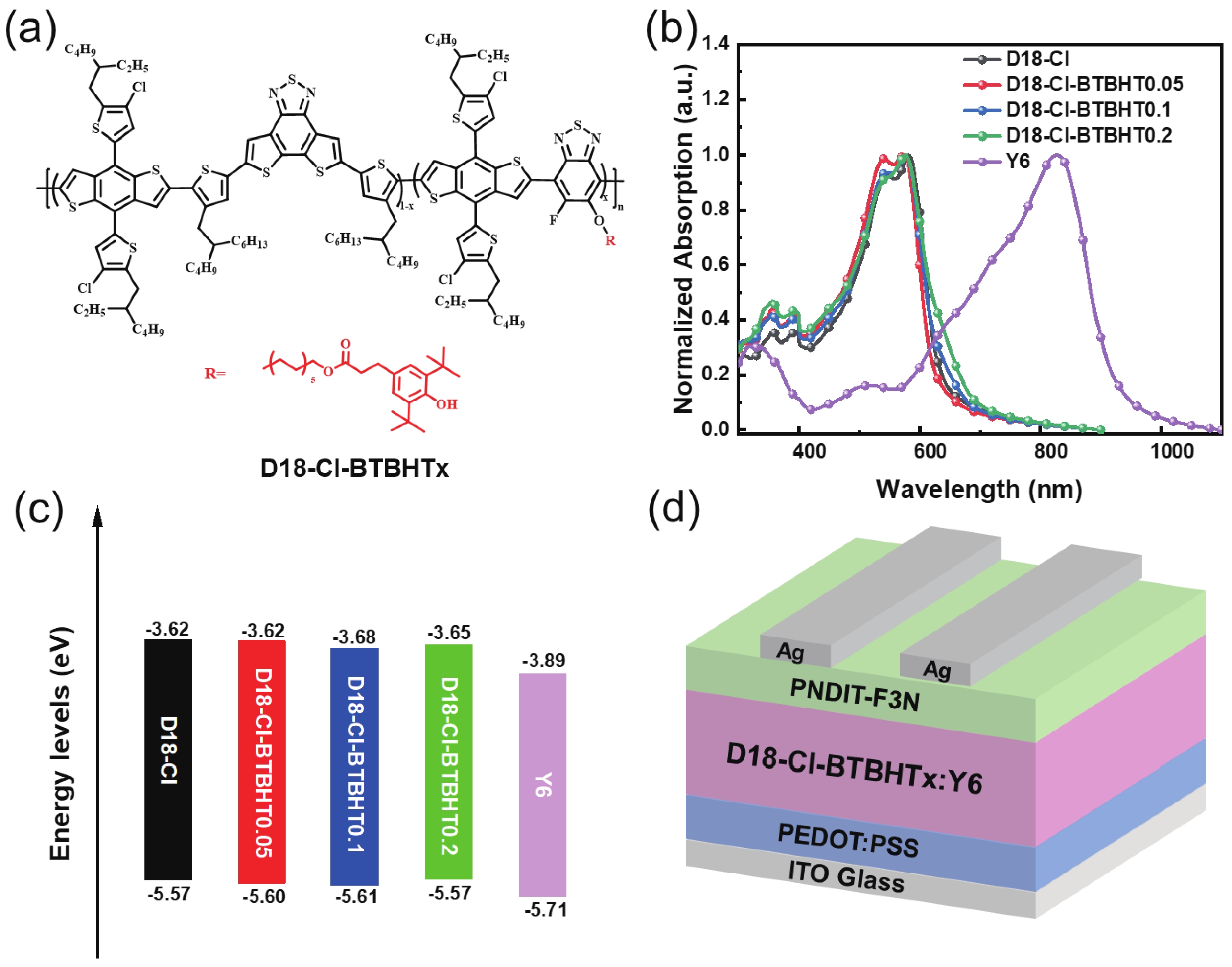
 DownLoad:
DownLoad:

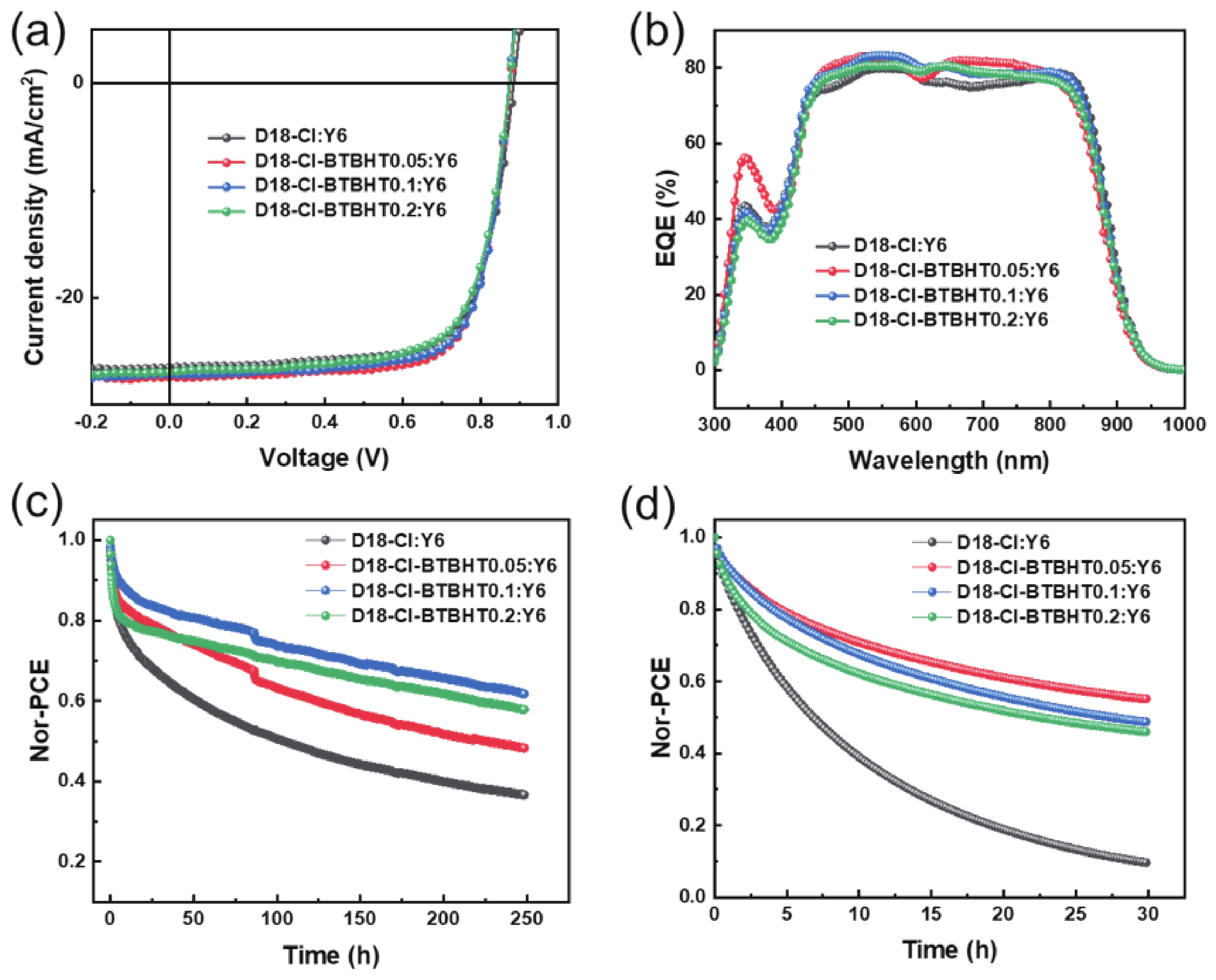
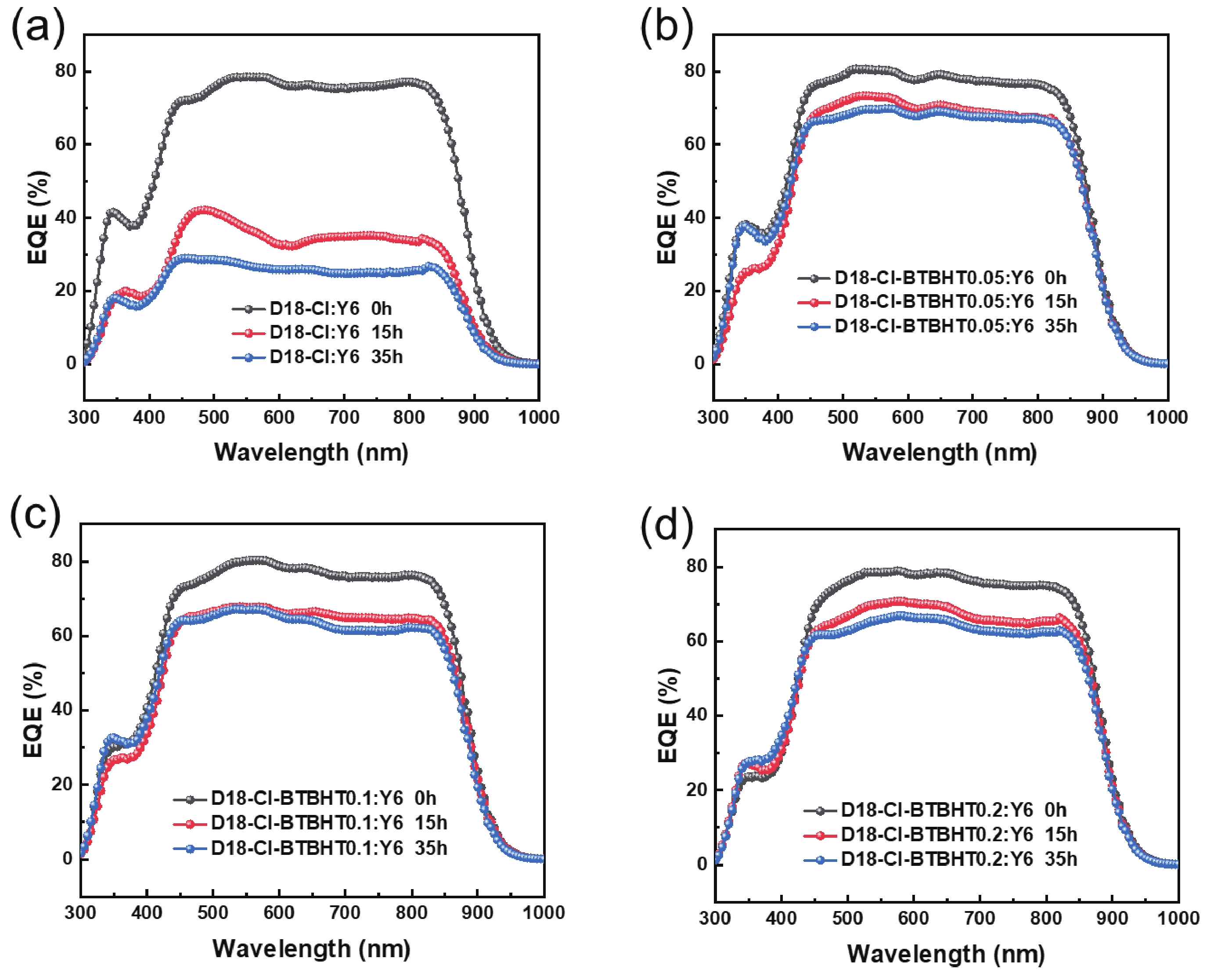
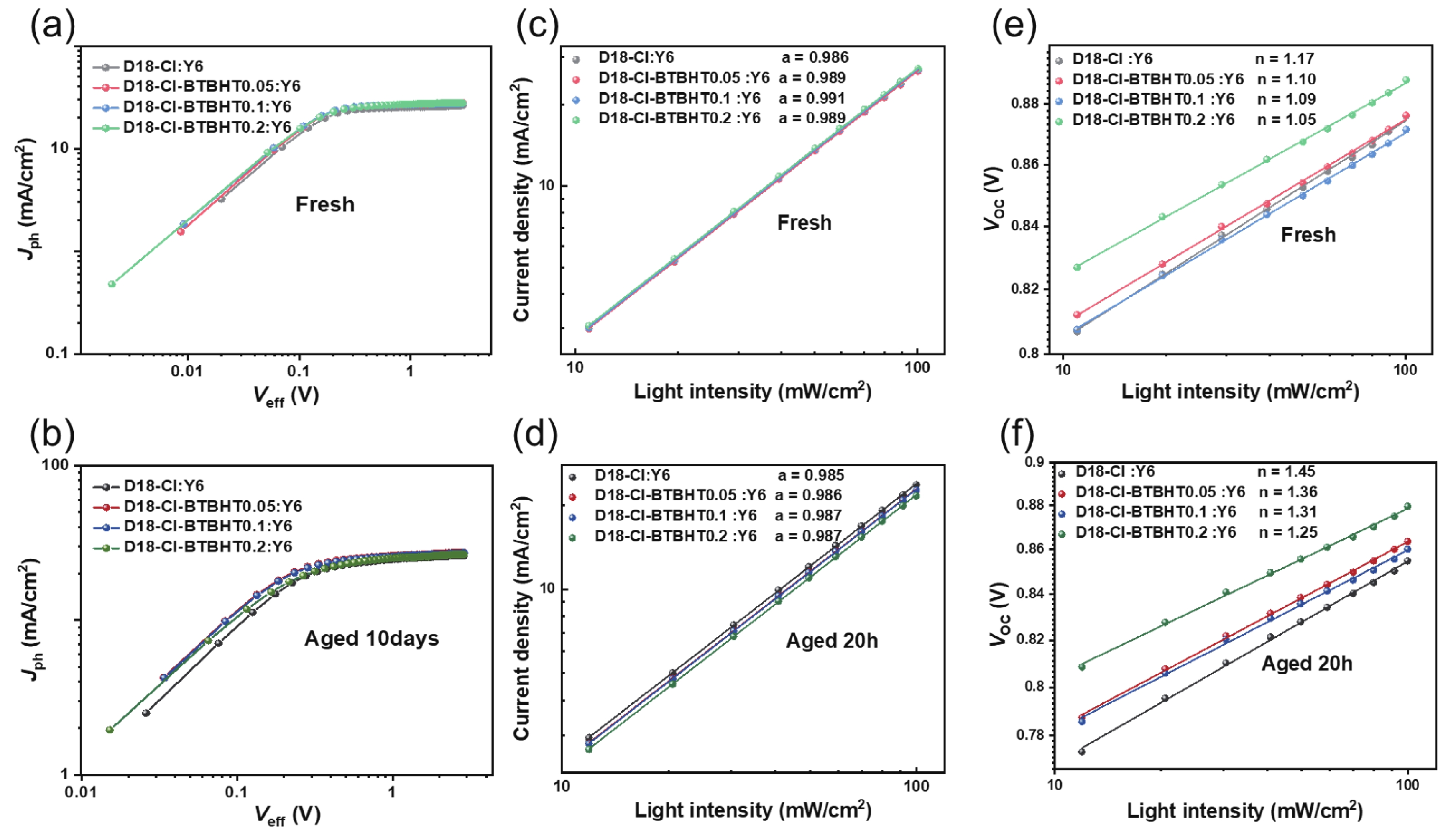
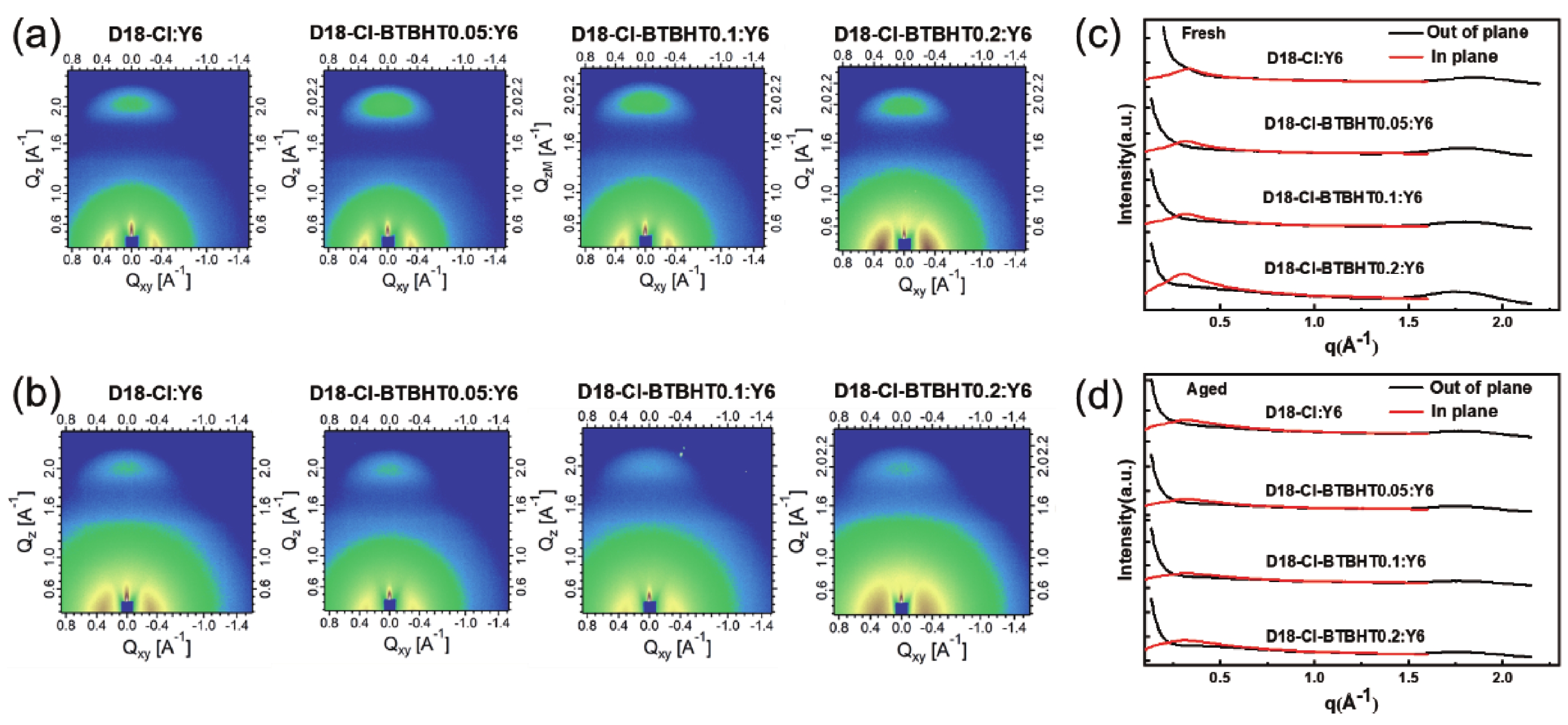










 Ao Song:received her BS degree in engineering from Hunan Normal University in 2020. She is now a Master's student in the State Key Laboratory of Luminescent Materials and Devices in South China University of Technology. Her research focuses on the stability of high-performance organic solar cells
Ao Song:received her BS degree in engineering from Hunan Normal University in 2020. She is now a Master's student in the State Key Laboratory of Luminescent Materials and Devices in South China University of Technology. Her research focuses on the stability of high-performance organic solar cells Qiri Huang:received his BS degree from Hefei University of Technology in 2020. He is now a Master's student in the State Key Laboratory of Luminescent Materials and Devices in South China University of Technology. His research focuses on developing high performance inverted organic solar cells
Qiri Huang:received his BS degree from Hefei University of Technology in 2020. He is now a Master's student in the State Key Laboratory of Luminescent Materials and Devices in South China University of Technology. His research focuses on developing high performance inverted organic solar cells Chunchen Liu:is an associate research fellow in South China University of Technology. He received his BS degree in Polymer Materials and Engineering from South China University of Technology in 2010 and gained his PhD degree in Materials Science from the South China University of Technology in 2005 under the supervision of Prof. Yong Cao. After postdoctoral work at National University of Singapore with Prof. Jishan Wu, he began his academic carrier in 2019 as a research assistant professor of Southern University of Science and Technology and then moved to South China University of Technology in 2021. He mainly focuses on the design and synthesis of conjugated molecules, polymers, and polycyclic aromatic hydrocarbons with polyradicals for opto-electronics
Chunchen Liu:is an associate research fellow in South China University of Technology. He received his BS degree in Polymer Materials and Engineering from South China University of Technology in 2010 and gained his PhD degree in Materials Science from the South China University of Technology in 2005 under the supervision of Prof. Yong Cao. After postdoctoral work at National University of Singapore with Prof. Jishan Wu, he began his academic carrier in 2019 as a research assistant professor of Southern University of Science and Technology and then moved to South China University of Technology in 2021. He mainly focuses on the design and synthesis of conjugated molecules, polymers, and polycyclic aromatic hydrocarbons with polyradicals for opto-electronics Fei Huang:is a full professor at South China University of Technology. He received his BS degree in Chemistry from Peking University in 2000 and gained his PhD degree in Materials Science from the South China University of Technology in 2005 under the supervision of Prof. Yong Cao. After postdoctoral work at University of Washington with Prof. Alex K.-Y. Jen, he began his academic career in 2009 as a professor of South China University of Technology. His main interests are in organic functional materials and devices for opto-electronics
Fei Huang:is a full professor at South China University of Technology. He received his BS degree in Chemistry from Peking University in 2000 and gained his PhD degree in Materials Science from the South China University of Technology in 2005 under the supervision of Prof. Yong Cao. After postdoctoral work at University of Washington with Prof. Alex K.-Y. Jen, he began his academic career in 2009 as a professor of South China University of Technology. His main interests are in organic functional materials and devices for opto-electronics





